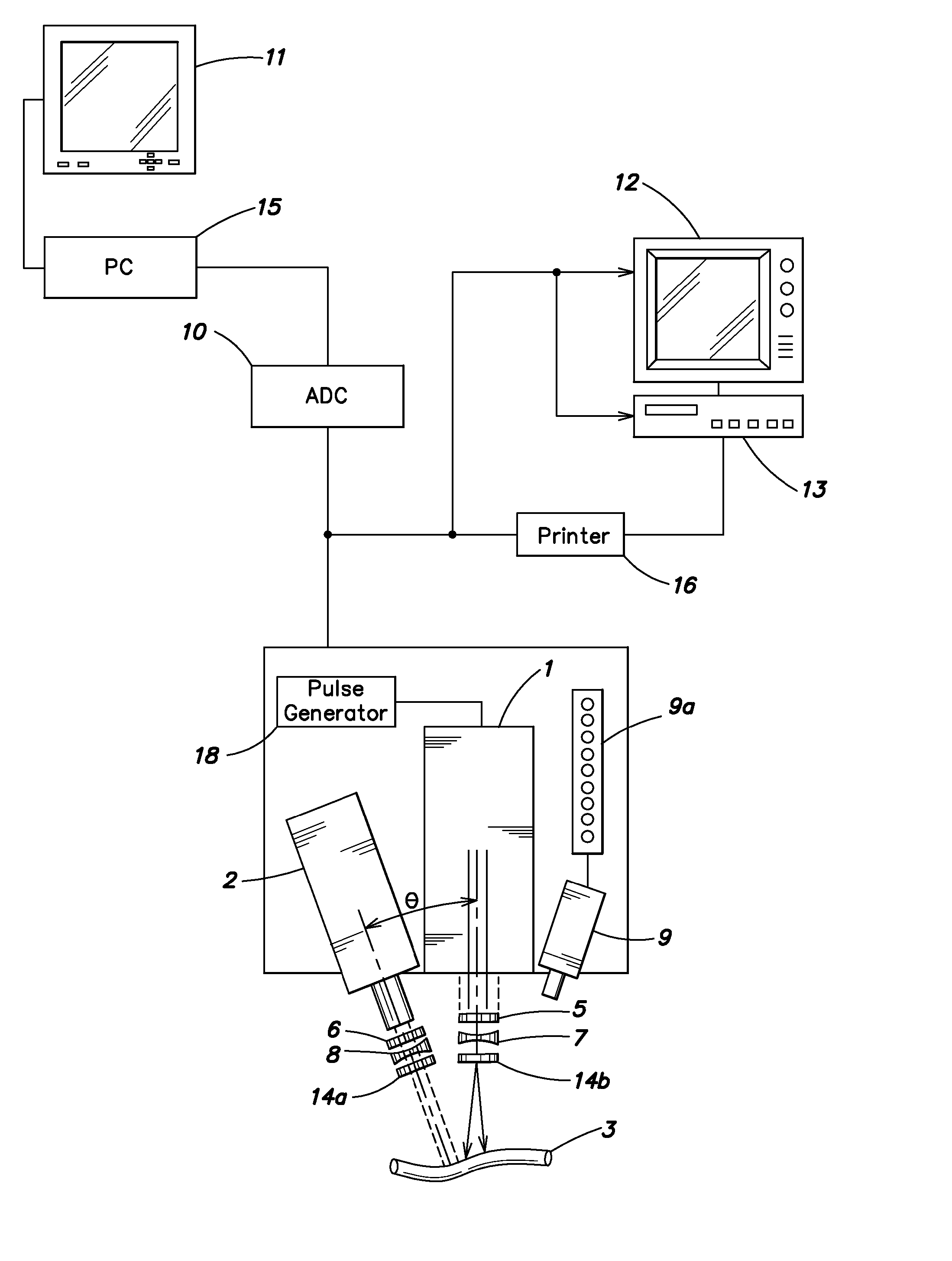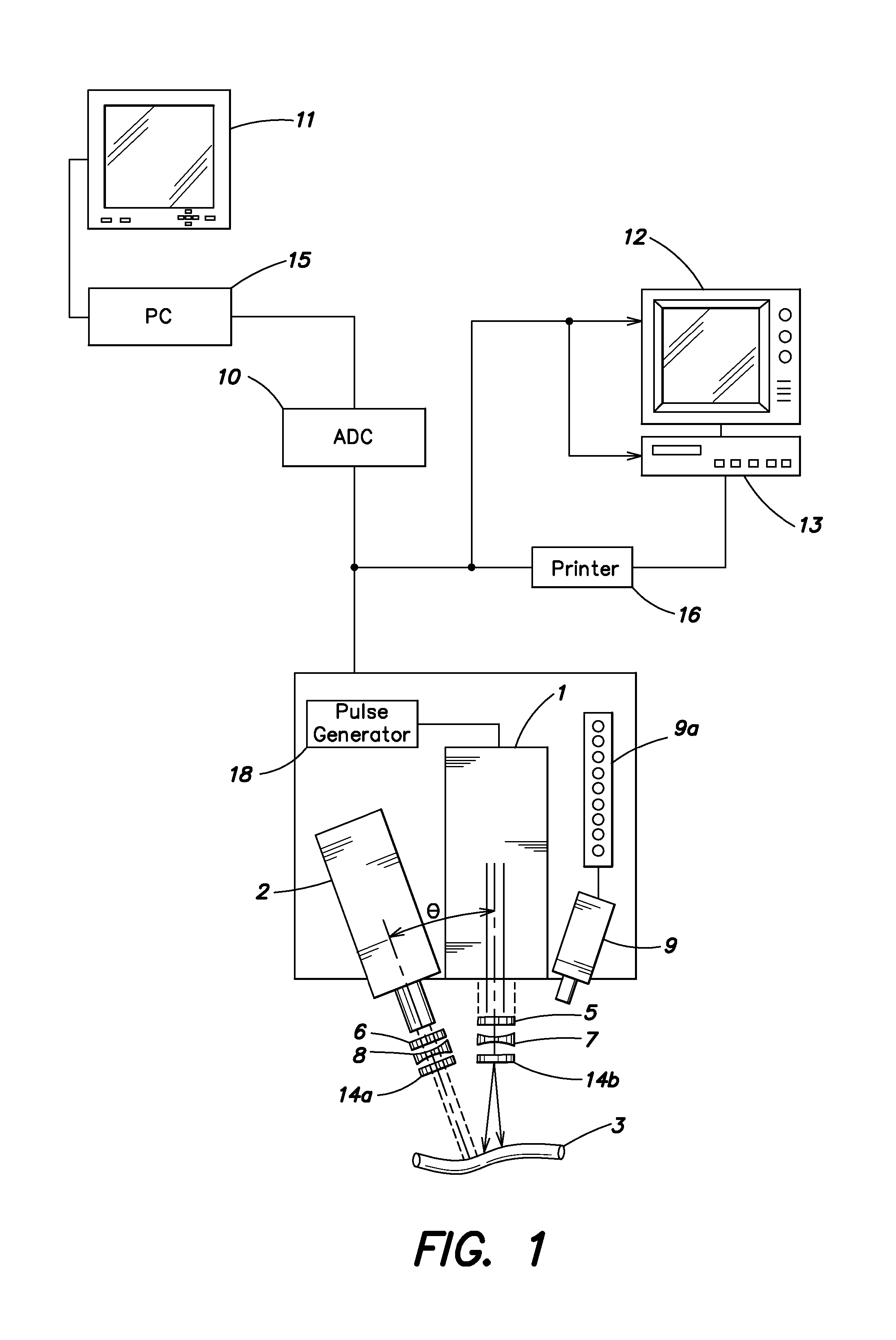Method and apparatus for performing intra-operative angiography
a technology of intraoperative angiography and angiography chamber, which is applied in the field of intraoperative angiography methods and equipment, can solve the problems of poor coronary artery function, poor blood circulation, stenosis and occlusion,
- Summary
- Abstract
- Description
- Claims
- Application Information
AI Technical Summary
Benefits of technology
Problems solved by technology
Method used
Image
Examples
example
[0064] This example demonstrates the use of a preferred apparatus of the present invention in observing the flow of a fluorescent dye through a particular vessel, i.e., a mouse femoral artery, and langendorff perfused heart, and also demonstrates the ability of the apparatus to determine the diameter of a mouse femoral vessel under both normal conditions and under the influence of topically applied acetylcholine.
[0065] In this example, a fluorescent dye (ICG) was injected into the vascular bed (via jugular cannulation in the mouse: via an infusion line in the langendorff perfused heart) and excited using radiation from a laser source (806 nm). The fluorescence (radiation) emitted by the dye (830 nm) was captured as a series of angiograms using a CCD camera. The camera relayed the angiograms to analog-to-digital conversion software running on a PC that digitized the angiograms. The digitized images were then analyzed both qualitatively (by viewing the monitor) and quantitatively. On...
PUM
 Login to View More
Login to View More Abstract
Description
Claims
Application Information
 Login to View More
Login to View More - R&D
- Intellectual Property
- Life Sciences
- Materials
- Tech Scout
- Unparalleled Data Quality
- Higher Quality Content
- 60% Fewer Hallucinations
Browse by: Latest US Patents, China's latest patents, Technical Efficacy Thesaurus, Application Domain, Technology Topic, Popular Technical Reports.
© 2025 PatSnap. All rights reserved.Legal|Privacy policy|Modern Slavery Act Transparency Statement|Sitemap|About US| Contact US: help@patsnap.com


